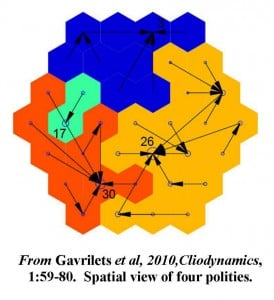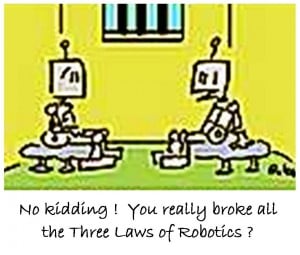“The revolution that surprised the world” was a headline in 1986 and just as easily applies to the revolutions now sweeping the Middle East. Today is the 25th anniversary of the first People Power Revolution that took the Philippine dictator, Ferdinand Marcos, out of power. That was Feb 22-25, 1986, the remarkable days of non-violent civil resistance against the 20-year repressive rule of a dictator. Those were the 4 days when 2 million unarmed people –common folks, priests, nuns – took to the main thoroughfare of Manila, called EDSA, built barricades, sang songs, made prayer vigils and refused to disperse. Those were the days when soldiers and tank crews facing the crowds were given kind words, praises and flowers. Also the days when soldiers simply could not fire on their own people and turned their guns around to join the revolution instead.
Back then, I was among the millions watching the events unfold on television, but in the comforts of home in New York. My parents and I were among the few that managed to go on a self-imposed exile to escape the dictatorship and could not return until the dictatorship was over. So, the events of those four days took on a more personal meaning for me.
Many similar revolutions have followed since then, taking the Philippine example of nonviolent regime change, such as that in East Germany and many other former Soviet Bloc countries. These last few weeks see history being made once again in the Middle East.
Non-violent civil disobedience is not new. It was happening already in many instances long before and made more widespread by Gandhi against British rule in India. But, it was never in the scale seen in the last 25 years. Why such a phenomenon only in the last 25 years? Repressive regimes have been around for millennia and people suffered through successions of regimes—good and bad—without triggering a massive popular revolt. What made the last 25 years so different?
I suppose dictators can blame it partially on science and technology!
People Power then
Perhaps the first attempt at people power revolt ever recorded was during the reign of Ramses III of ancient Egypt. In that instance, the wives and concubines of Ramses conspired to start revolts against their own pharaoh by sending written messages to their relatives in the far flung empire at the same time. The revolt failed and all the conspirators executed. Ramses III ‘s reign was also the first time in recorded history of a labor strike when tomb builders were not provided with adequate grain supply.
Back then Ramses could blame his problem on the invention of the papyrus.
 The Philippine experience 3,000 years later was two million people coming out on the streets almost at the same time, surprising a dictatorship that could not muster effective resistance against such an unexpected, passive, non-confrontational show of displeasure against the government. Soldiers would not fire on the mass of people, many of whom are their own relatives. Although there were organized opposition leaders at the time, they too were surprised by the unexpected turn out.
The Philippine experience 3,000 years later was two million people coming out on the streets almost at the same time, surprising a dictatorship that could not muster effective resistance against such an unexpected, passive, non-confrontational show of displeasure against the government. Soldiers would not fire on the mass of people, many of whom are their own relatives. Although there were organized opposition leaders at the time, they too were surprised by the unexpected turn out.
That revolution was made possible by portable radios. People listened to Radio Veritas (a Catholic church owned and operated radio station), coordinating the revolt by listening to the minute by minute events, troop movements and where food/ water were needed. If it were not because of the popularity of cheap, portable ‘transistor’ radios, it is doubtful that such a spontaneous mass movement of people can be coordinated back in 1986.
For the engineering impaired ones like me, I had to read more about what transistors radios really mean as I have always taken that for granted. And, most of our newer generation probably can’t relate to this at all. I asked my kids what they know about transistor radios and I just drew a blank stare. Before the transistor radio was developed by Bell Laboratories (Yes, its Bell and not Sony as most think) in the 1940’s, the typical radio used a vacuum tube and the smallest radio was the size of a toaster. Hardly the type to carry around since it needed to be plugged to an electrical outlet. The transistor changed all that. It is a tiny, solid piece of semiconductive material which amplifies and switches electronic signals. Unlike the vacuum tubes that serve the same function, the transistor is compact, does not need to warm up first like the vacuum tube, turns the radio on instantly, can be operated by batteries, rugged and lost lasting (over 50+ years of performance life). Its invention, thought to be among the best of the 20th century, made the development of hand-held calculators, cell phones and laptop computers possible. By the 1970’s, over 7 billion cheap transistor radios were manufactured. Almost every household on earth can afford to have one, even in poor countries where it became a common source of entertainment, especially with the worldwide popularity of rock and roll music. And there were plenty during the People Power Revolution to coordinate the mass uprising.
People Power now
Though the passions, anger, resentments and collective suffering were all part of the common experiences, the single catalyst that made these revolutions in Tunisia, Egypt and now Libya possible was the technology of cell phone, video and internet. Had the mobile systems not evolve from its original 80 lb weight in 1946 by Bell Labs engineers to its current light weight design first developed by Motorola in 1973 , these popular uprisings would have been more difficult. The first call made from a cell phone by Motorola’s inventor, Martin Cooper, in 1973 was to his rival at Bell Labs, Dr. Joel S. Engel. Even years before that, the concept of cellular phone was already part of the science fantasy of Star Trek in the late ‘60s. Back then, it was called the ‘communicator.’
 Mobile phones and internet are the first to be shut down by besieged dictators because of their power to mobilize people. Just like cryptic messages written on papyrus 3,000 years ago, mobile text messages, voice and videos certainly made the call to action even more immediate, compelling and personal.
Mobile phones and internet are the first to be shut down by besieged dictators because of their power to mobilize people. Just like cryptic messages written on papyrus 3,000 years ago, mobile text messages, voice and videos certainly made the call to action even more immediate, compelling and personal.
People Power in the future
While dictatorships are slowly fading to the pages of history just like hard core communism, there will always be room for dissent in mass scale. Being dissatisfied is a very human thing and there will always be some cause to take up later on. What technology will propel the future people power revolt? Can’t imagine.
But, if I have to fantasize, I would say teleportation, just like in Star Trek episodes and movies. Scientist are making progress now in transporting tiny objects from one place to another already. The popular phrase “Beam me up Scotty” will be in common usage by then and people will simply materialize instantly for the next people power revolt.
Star Trek’s creator, Gene Roddenberry would had been ecstatic.
Jonathan R. Matias
Chief Science Officer
Poseidon Sciences Group
www.poseidonsciences.com




